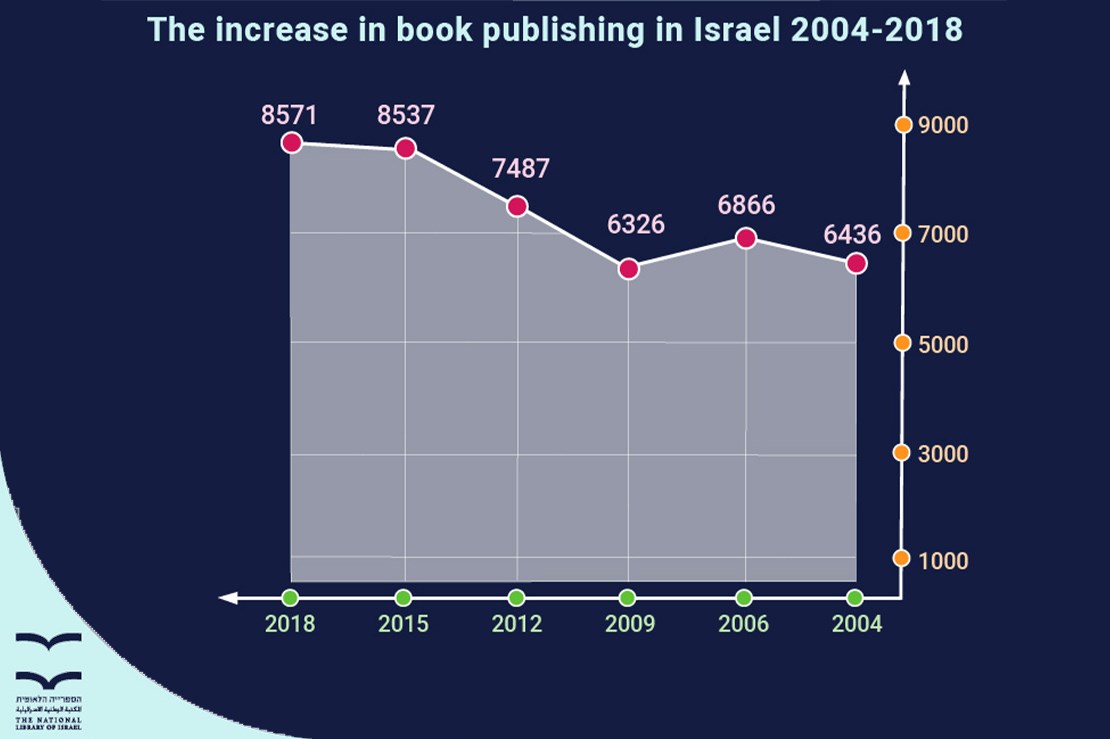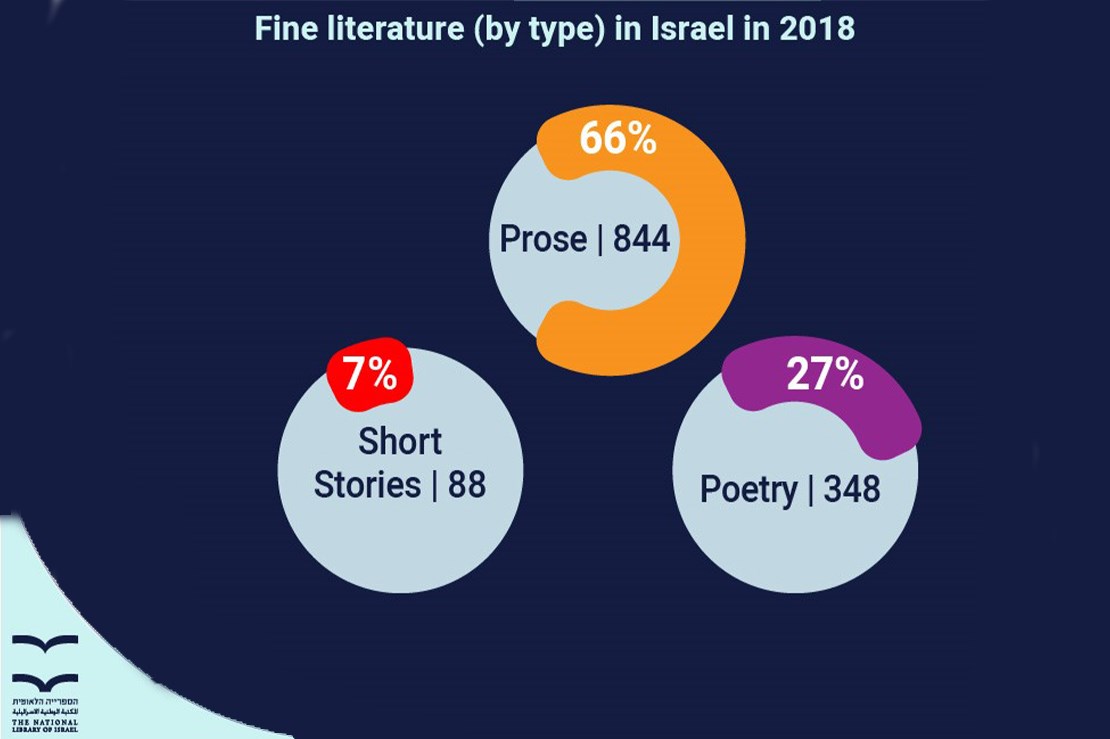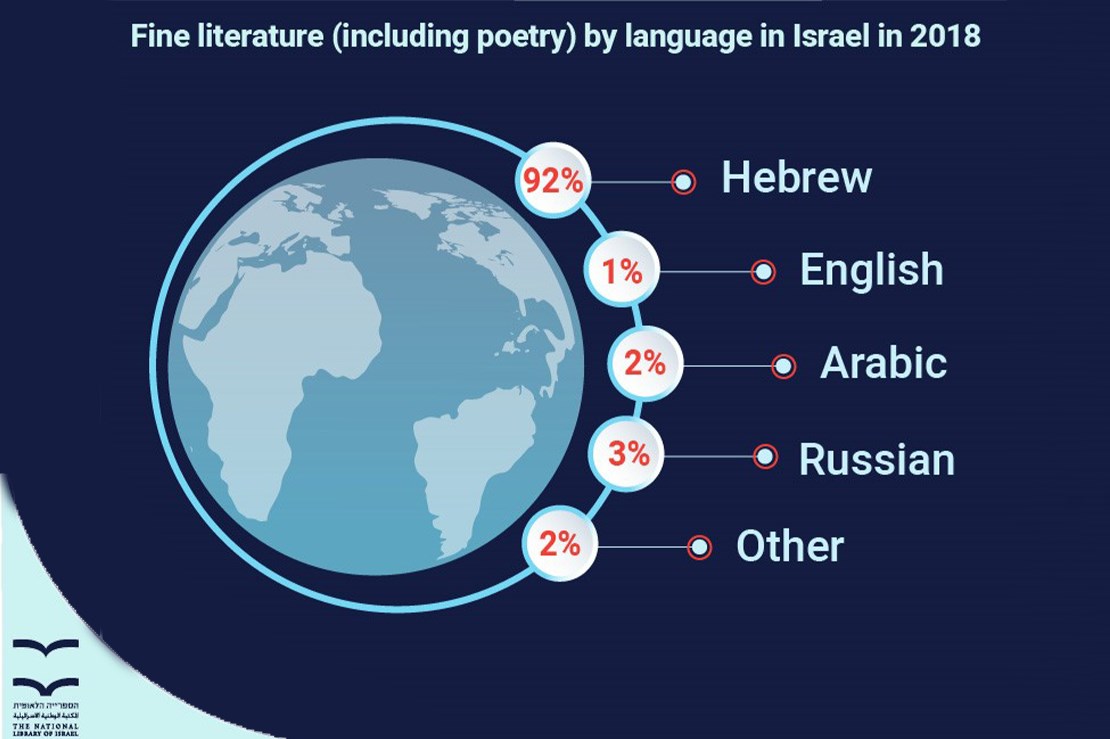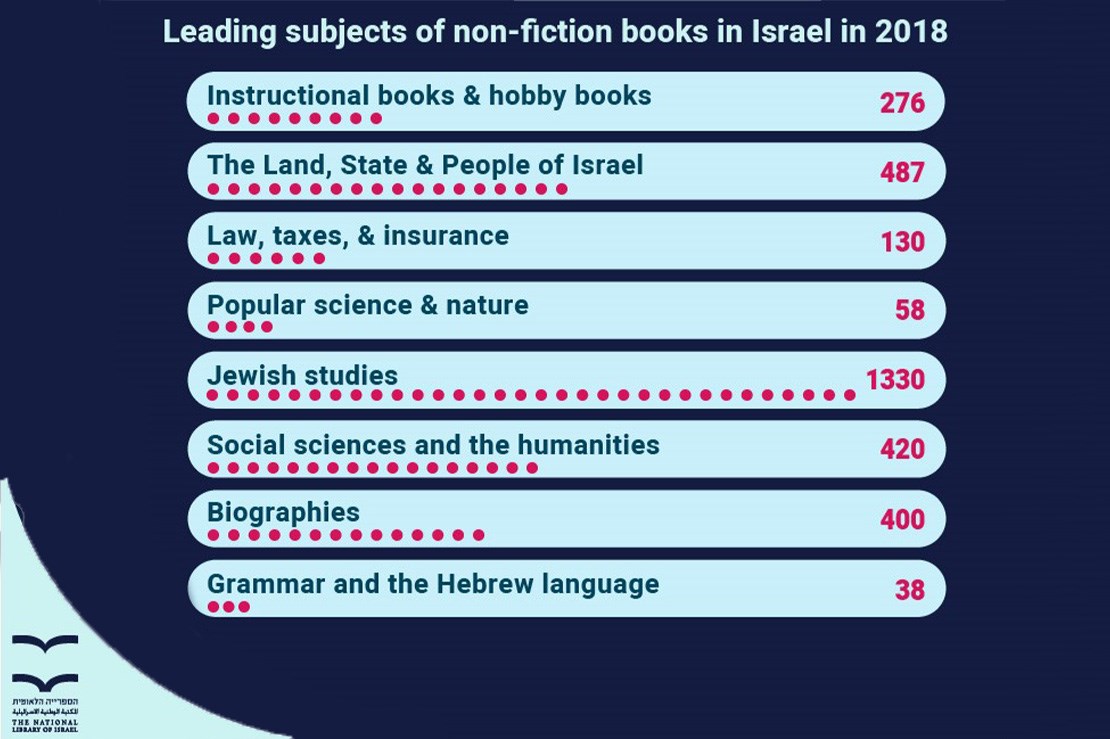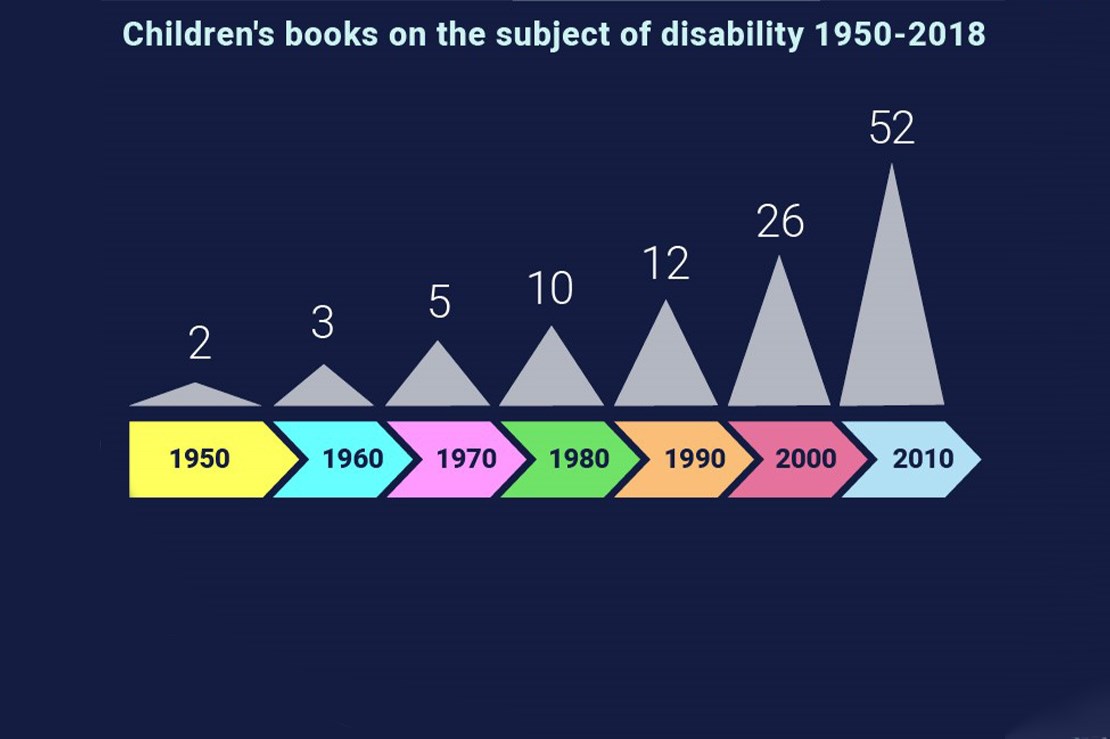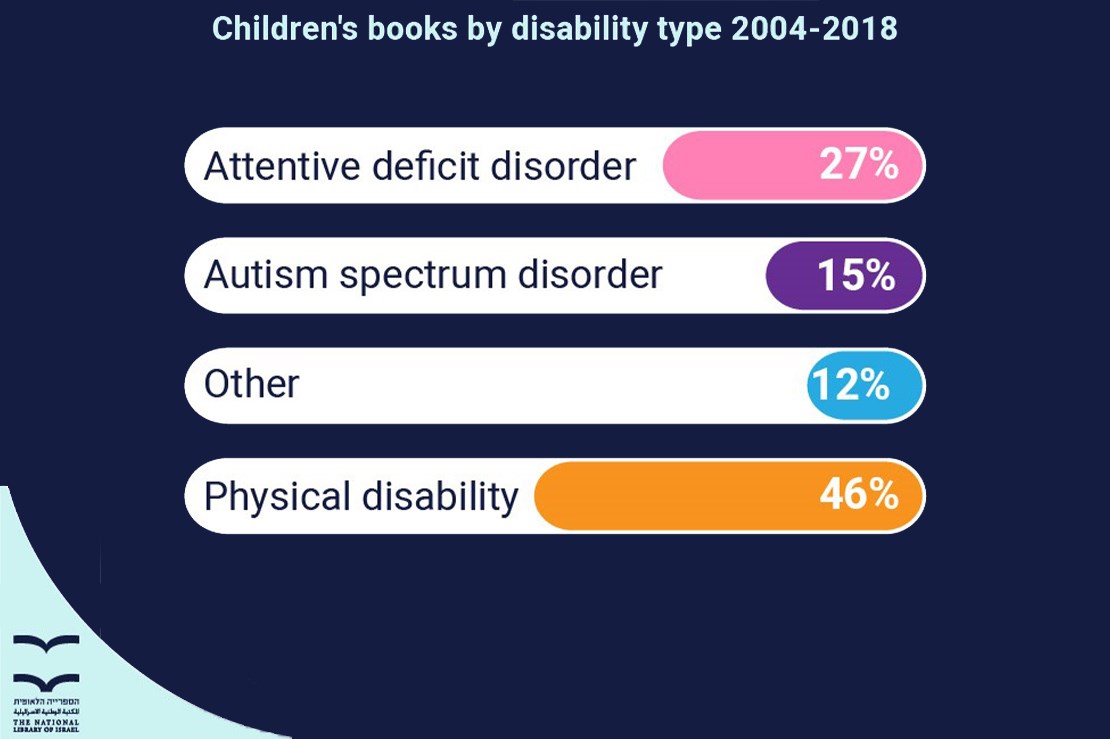Books for Children and Youth
In 2018, 1,045 books for children and youth were received at the National Library, as compared to 1,056 in 2017. Not surprisingly, an overwhelming majority (93%) of children's books were published in Hebrew. 4.2% of children’s and youth books were published in Arabic, and the rest were written in English and Yiddish.
Many of the children's books published in Israel are not Hebrew originals, but books translated from foreign languages. Here there is an important distinction made between children's literature for the general public and children’s literature for the ultra-orthodox community - In children's literature for the general public, 65.6% of the titles are original books written in Hebrew and the rest are mostly books translated from English. In regards to children’s literature for the ultra-Orthodox community, 93% of the titles are original Hebrew books.
This year, there were also 86 books published for infants and toddlers. These books are the starting point for the parent-child reading experience and include first words such as the names of objects, animals, and more.
A trend that has gained footing in recent years is the proliferation of science fiction and fantasy books, perhaps due to a growing focus on this genre in various other media, including television and computer games. In 2018, 73 books were published in the genre of science fiction and fantasy, most of them written for youth (89%). The overwhelming majority of these books (79%) were books translated from foreign languages. In addition, 87 comic books were published, 64% of which targeted the ultra-orthodox community.
Children's books can be used as educational and bibliotherapeutic (book therapy) tools. This year, 57 books dealing with emotions and the possibilities to express them were published in Israel. The vast majority (92%) are intended for ages 4-8, helping parents and educators to encourage their children to identify and reflect on their own feelings through books. Two of the most prominent issues dealt with in these books were divorce, and entering a new schoolroom setting.
A relatively new phenomenon is the publication of biographies specially adapted for young children, up to third grade. In the past, biographies were written mainly for older children and youth (ages 9 and over). This year, 22 biographies for children were published, most of them in book series that offer children exposure to historical leaders and figures who influenced humanity in general and Israel in particular. The purpose of many of these biographies is to emphasize the importance, impact, and contributions of influential women in Israel and around the world.

 Sign in with Google
Sign in with Google
 Sign in with Facebook
Sign in with Facebook

